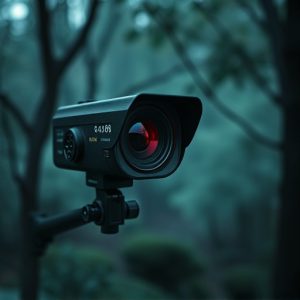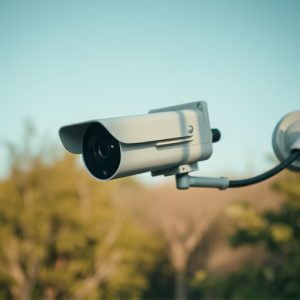Undetectable Wireless Cameras: Home Microphone Bug Sweeping & Countermeasures
Undetectable wireless security cameras, disguised as everyday objects, pose a growing privacy threat…….
Undetectable wireless security cameras, disguised as everyday objects, pose a growing privacy threat. These devices, leveraging Wi-Fi and high-definition video, are difficult to identify with traditional methods. Advanced detection tools like audio analysis software and thermal imaging help combat this evolving risk. Protecting against them requires robust security measures: encryption, firmware updates, secure networks, and 2FA. Regular bug sweeps are crucial for maintaining privacy in the digital age.
“In an era of increasingly sophisticated surveillance technology, the silent threat of hidden microphones poses a significant risk to privacy. This article delves into the world of microphone bug sweeping, equipping homeowners with essential knowledge to protect their spaces from undetectable wireless security cameras—a growing concern among privacy advocates. We explore basic concepts, emerging threats, advanced detection techniques, and practical countermeasures, empowering individuals to safeguard their homes and personal lives.”
- Understanding Microphone Bug Sweeping: The Basics
- Undetectable Wireless Security Cameras: A Growing Threat
- Advanced Techniques for Microphone Bug Detection at Home
- Implementing Effective Countermeasures Against Audio Bugs
Understanding Microphone Bug Sweeping: The Basics
Microphone bug sweeping, or audio surveillance, is a clandestine method of monitoring conversations and activities through hidden microphones. These devices are often tiny, undetectable wireless security cameras that can be placed in various locations to capture sound discreetly. They utilize advanced technology to transmit audio data wirelessly, making them hard to detect with conventional means.
Understanding the basics of microphone bug sweeping involves recognizing potential hiding spots for these devices, such as wall outlets, light switches, or even seemingly innocuous objects like clocks and picture frames. It’s crucial to be aware of the latest surveillance techniques, especially when it comes to sophisticated technology used in undetectable wireless security cameras. By staying informed, individuals can take proactive measures to protect their privacy by conducting regular bug sweeps and ensuring secure communication channels.
Undetectable Wireless Security Cameras: A Growing Threat
Undetectable wireless security cameras have emerged as a significant and evolving threat in the digital age. These hidden devices, often disguised as everyday objects like plants or light bulbs, use Wi-Fi connections to transmit video feeds, making them nearly impossible to detect with traditional means. As technology advances, these covert surveillance tools become more sophisticated, capturing high-definition footage without raising suspicion.
Homeowners and businesses alike are at risk from this insidious form of invasion of privacy. The ease of installation and the lack of awareness surrounding their presence make them a growing concern. With the ability to record activities unnoticed, undetectable wireless security cameras can compromise personal safety, intellectual property, and even national security if used maliciously. Therefore, it’s crucial to stay informed about emerging detection techniques and invest in robust security measures to counter this modern-day threat.
Advanced Techniques for Microphone Bug Detection at Home
In today’s digital age, ensuring privacy and security in your home environment has become paramount. One stealthy threat that often goes unnoticed is the presence of hidden microphones or bugs. Traditional detection methods may not always be effective against modern, advanced devices designed to evade notice. This is where innovative techniques come into play.
One cutting-edge approach involves utilizing specialized audio analysis software capable of identifying subtle acoustic anomalies. These tools can detect unusual sound patterns that might indicate the presence of hidden microphones, especially in wireless security cameras known for their undetectable nature. By analyzing frequency ranges and signal inconsistencies, experts can pinpoint devices transmitting covertly within a home. Additionally, thermal imaging technology offers another layer of inspection, as it can reveal heat signatures indicative of electronic equipment operating discreetly.
Implementing Effective Countermeasures Against Audio Bugs
Implementing effective countermeasures against audio bugs is crucial for maintaining privacy and security in homes equipped with wireless security cameras, often overlooked components that can provide an entry point for malicious actors. One of the primary strategies involves employing advanced encryption protocols to secure all communication channels associated with these devices. By adopting robust encryption standards, such as AES-256, data transmitted between the camera, its companion apps, and the cloud servers becomes virtually impossible to intercept or decipher without authorized access.
Additionally, regular firmware updates play a pivotal role in bolstering security measures. Manufacturers often release patches that address vulnerabilities, so keeping your wireless security cameras and associated software up to date is essential. Utilizing secure networks for data transmission, like HTTPS protocols, also adds an extra layer of protection, ensuring that even if a bug is present, the stolen information remains undecipherable. Moreover, enabling two-factor authentication (2FA) serves as a powerful deterrent against unauthorized access, making it significantly harder for hackers to exploit any potential bugs.
In an era where technology advances rapidly, the threat of undetectable wireless security cameras and audio bugs in our homes is a growing concern. This article has explored the basics of microphone bug sweeping, outlined advanced detection techniques, and provided critical insights into countering these hidden dangers. By understanding the risks and implementing effective measures, we can ensure our privacy and security in the digital age. Stay vigilant, stay informed, and protect your home from these modern-day threats.


